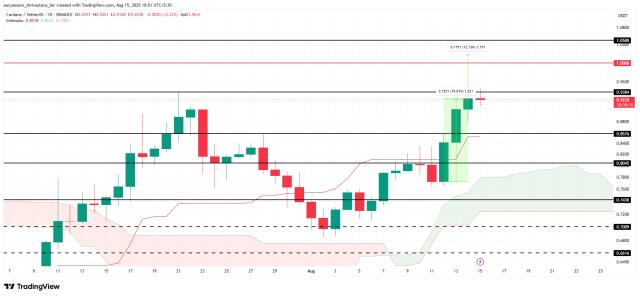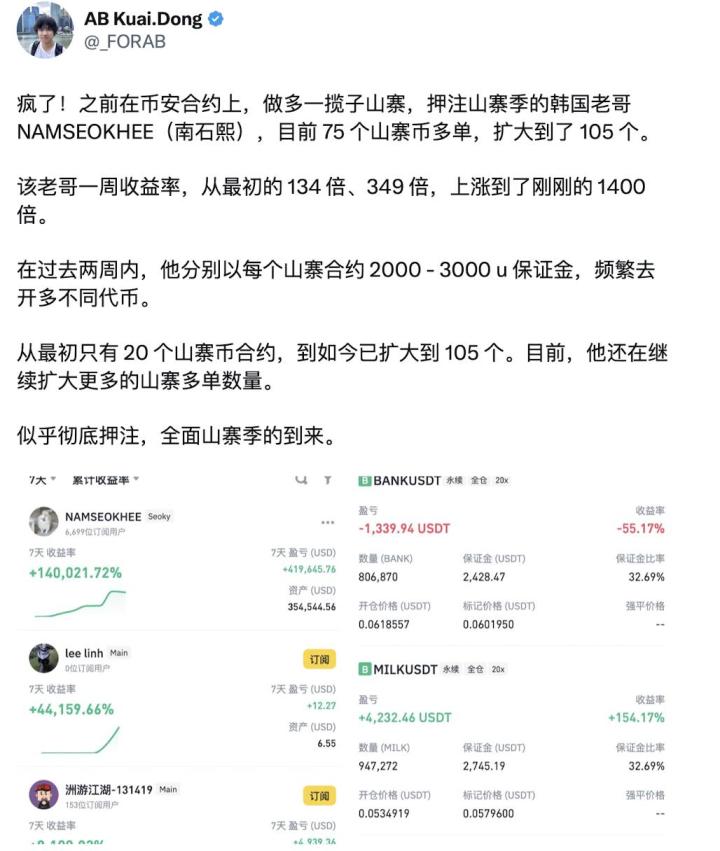RWA altcoins are attracting attention in June 2025 as capital flows into real asset protocols with clear utility and institutional support.
Zebec Network (ZBCN), Plume (PLUME), and OriginTrail (TRAC) are three prominent tokens with recent movements and technical setups. ZBCN is strongly adjusting after a major surge. PLUME is trying to stabilize, although its indicators remain negative. TRAC is steadily climbing, supported by increasing volume and infrastructure relevance.
Real-world assets (RWA) are becoming a major trend
Real-world assets (RWAs) are quickly emerging as the biggest story for the next phase of cryptocurrency, with industry leaders pointing to record capital flows, institutional acceptance, and infrastructure-based yields as signs of an ongoing structural transformation.
"This is perhaps the most optimistic moment we've seen for on-chain real assets. Surpassing $22 billion in RWA TVL is not just a milestone, it reflects growing confidence in Web3's ability to deliver real yields, utility, and transparency beyond speculative tokens. We are witnessing directly how investors are shifting towards protocols that provide tangible value and real-world impact," said Jordan Myers, Founder and CEO of EcoYield.
Myers continued to emphasize the diversification of encrypted assets and the rise of infrastructure-based yield models.
"We are seeing an explosion of crypto projects beyond real estate, such as clean energy infrastructure, including solar assets and batteries, art, and more. This is a new wave of RWA protocols unlocking stable yields, backed by fiat, tied to things like Power Purchase Agreements (PPAs). This is not just an optimistic moment, but a shift towards trust-based finance, where yields are provided by infrastructure, not hype."
Regarding risks in this emerging market, Myers was very clear.
"The biggest risks are excessive regulatory intervention, lack of liquidity, and unverified encryption. If protocols rush to bring RWAs on-chain without clarity on the legal framework, asset oversight, or verifiable yield logic, trust could be compromised."
 Total RWA value. Source: rwa.xyz.
Total RWA value. Source: rwa.xyz.Kevin Rusher, founder of the RWA lending and borrowing ecosystem RAAC, reinforced the point with data.
"Stablecoin data is showing a clear structural shift in cryptocurrency. According to OKG Research, 52% of newly issued stablecoins in the past 30 days have flowed directly into RWA yield pools or institutional payment centers. This represents a unique turning point, with newly issued stablecoins bypassing centralized exchanges and other intermediaries to flow directly into on-chain financial infrastructures."
Rusher added:
"It also confirms what is now an undeniable reality in the cryptocurrency ecosystem: Real-world assets (RWAs) are no longer a side story, but the most actively capital-absorbing field in cryptocurrency today. The market capitalization of stablecoins has reached an all-time high of $246 billion, increasing 3.39% since April. Combined with RWA capital flow, this tells us that new crypto investors are seeking stability through stablecoins, but not just to keep them on the sidelines. Instead, they are actively using stablecoins to participate in the cryptocurrency ecosystem."
This activity is occurring across the entire system. With stablecoins pegging yield repositories and serving as payment rails, the gap between traditional and decentralized finance is rapidly narrowing.
"BlackRock's BUIDL fund, now approaching $3 billion in AUM, is working to use RWA-backed assets as DeFi collateral on Avalanche. Meanwhile, the market capitalization of US-encoded treasuries has just exceeded $7 billion, reflecting strong demand for on-chain exposure to traditional assets," Rusher noted. This is no longer theoretical; it is happening. Large institutions are deploying into native cryptocurrency systems, using assets tied to real-world value.
Now, let's explore the notable RWA altcoins in June.
Zebec Network (ZBCN) adjusts after a strong surge
ZBCN has had an explosive surge in the past month, increasing nearly 300% in the past 30 days and over 117% in the past week alone.
However, this surge is now facing a strong correction, with the token dropping 15% in the past 24 hours and slipping below $0.0050.
 ZBCN price analysis. Source: TradingView.
ZBCN price analysis. Source: TradingView.The recent correction suggests that profit-taking may be occurring after a strong surge, as short-term traders lock in profits.
Despite its impressive momentum, ZBCN is now facing a critical technical challenge that will determine whether this decline is just a short pause or the beginning of a deeper correction.
The token is currently oscillating near an important support level at $0.0040. If this level does not hold, ZBCN could extend its correction to $0.00335. A prolonged downward trend could push it even lower, with additional support levels at $0.0026 and $0.00216.
Plume (PLUME) is trying to stabilize
PLUME is trading back above $0.16, showing signs of recovery despite declining nearly 4% over the past seven days. With a market capitalization of $322 million, the token is relatively maintaining stability amid broader market volatility.
However, technical indicators remain cautious - its EMA lines are still declining, with short-term medium lines below long-term lines, indicating that the recent recovery lacks strong trend confirmation at this time.
 PLUME price analysis. Source: TradingView.
PLUME price analysis. Source: TradingView.If the current correction continues, PLUME may slide back to test support at $0.15, and if it breaks below that, it could open the door to further losses. However, if the price momentum returns, the token may attempt to reclaim the $0.165 level.
A stronger upward trend could allow PLUME to push up to $0.183, and if that resistance is broken, it could rise to $0.209 - surpassing the $0.20 mark for the first time since May 14.
OriginTrail (TRAC)
OriginTrail (TRAC) has shown stable momentum over the past month, increasing 20.35% in the last 30 days and 9.6% in the past week.
With a market capital of $236 million and a 24-hour trading volume of $3.82 million, the token is attracting new attention as it moves through important price zones.
TRAC powers the decentralized knowledge infrastructure of OriginTrail, designed to support verifiable and reliable data flows for artificial intelligence.
 TRAC price analysis. Source: TradingView.
TRAC price analysis. Source: TradingView.From a technical perspective, TRAC is approaching important resistance levels at $0.48 and $0.502. A successful breakout above these points could pave the way for a move towards $0.548.
However, the token also faces downside risks if selling pressure increases. The primary support is at $0.44, and if that level is broken, TRAC could drop further to $0.406.
A continued downward trend could push it down to as low as $0.377, making the upcoming trading sessions crucial in determining its short-term trajectory.






